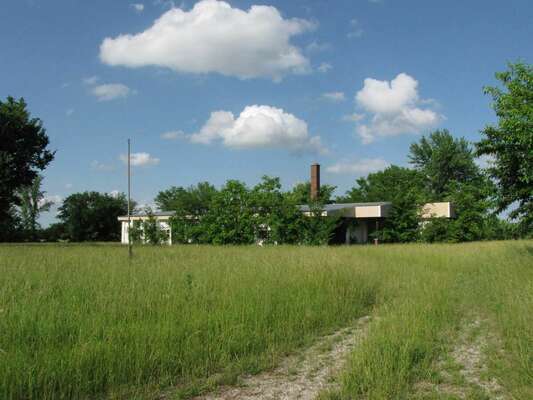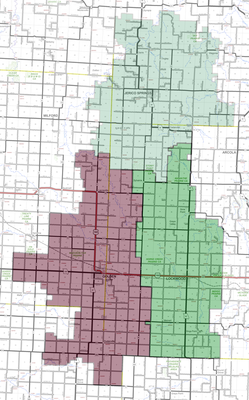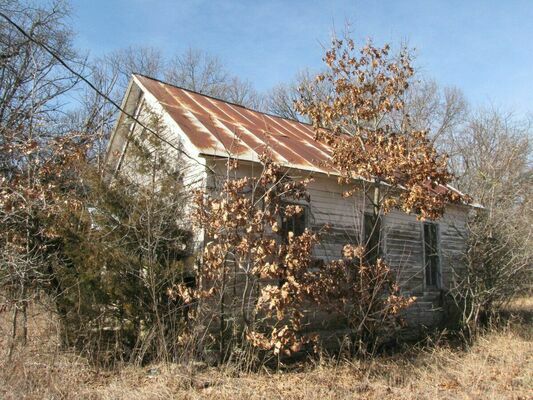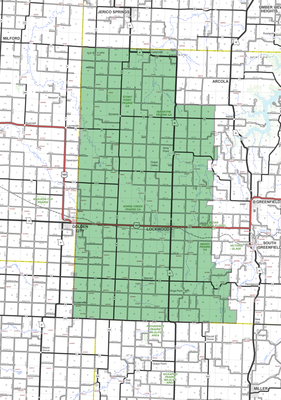School Consolidation: Sylvania School 1954-1962 - Part I
In the time leading up to the votes that reorganized all the school districts in Dade County into the four present systems, a gentlemen’s agreement promised the construction of a modern grade school in the Sylvania community in the northern, predominantly rural part of what was to become the Lockwood R-I School District.
This school was intended to serve the students in the Cedarville and Sylvania communities and the surrounding rural areas left in a sort of no-man’s land following the closure of the Jerico Springs High School during World War II.
In the 1932 annual report of the department of education, the state of Missouri had recommended that the common districts (one-room schools) in Dade County surrounding Cedarville and to the north of Sylvania be consolidated into an expanded Jerico Springs district, however voters in that community defeated a tax proposal in early 1942 that would have provided funding to keep the district’s four-year, first-class high school in operation. Jerico Springs and surrounding districts in Cedar County would later become part of the Stockton R-I system when Cedar County reorganized its schools into just two districts, centered on Stockton and El Dorado Springs.
Following the Dade County reorganization elections of 1951, construction was soon begun on the new school building in Sylvania, near the community’s older one-room school, named Star, formerly of District No. 74. Work was completed on the modern cinder-block structure in time for the start of classes in the fall of 1954. Besides the former Star School, students from other former one-room districts would also likely be attending classes at the new Sylvania School, including: District No. 52, Gentry; District No. 54, Boggy Springs; District No. 71, Central; District No. 72, Banner, District No. 73 Stony Point; District No. 75 Stone; District No. 76, Old Sylvania (at the original Sylvania townsite); District No. 77, Shannon Valley; District No. 78, Sunshine; District No. 80, Paragon; District No. 81, Rockdale (near the ghost town of Flory); District No. 82, Cedarville (near Cedarville).
It wasn’t long, however, before it appeared that the R-I district intended to renege on the gentlemen’s agreement with the Sylvania community.
Less than three years after the Sylvania grade school was opened, the Lockwood district began to present bond issue proposals to voters, which would allow for the construction of a new high school and additions to the grade school in Lockwood, allowing for the closure of the Sylvania facility.
There were two elections regarding the bond issue proposal held in 1957, with the district paying for six polling places to be open, one at the Lockwood High School and the other five in rural areas of the district. Each time, the proposal failed to receive the two-thirds super-majority of votes then required by state law for approval — inside Lockwood, town voters were in favor of the proposal, however the rural voters were not, with the largest vote totals against predictably coming from the northern portion of the district, centered on Sylvania. Only one of the five rural polling stations recorded a “yes” vote over 50 percent, that located at the former Freedom School, southeast of Kings Point near the Lawrence County line.
After the failure of the second bond issue proposal, the R-I school district board of education adopted a new policy that the district would only hold elections at three polling locations: the Lockwood school, the Sylvania school, and the former Freedom School building. This was ostensibly to save money on the cost of the elections, as the county charged the district about $30 per polling place, or about $278 adjusted for inflation. That would decrease the expense of holding elections from $180 to $90, or from about $1,670 to about $834 in 2021 dollars.
A few residents of the Sylvania area didn’t see it that way, and following the results of the next election, filed a lawsuit that went all the way to the Missouri Supreme Court, which will be discussed in the second part of this article, next week.
Please support The Greenfield Vedette by subscribing today!
